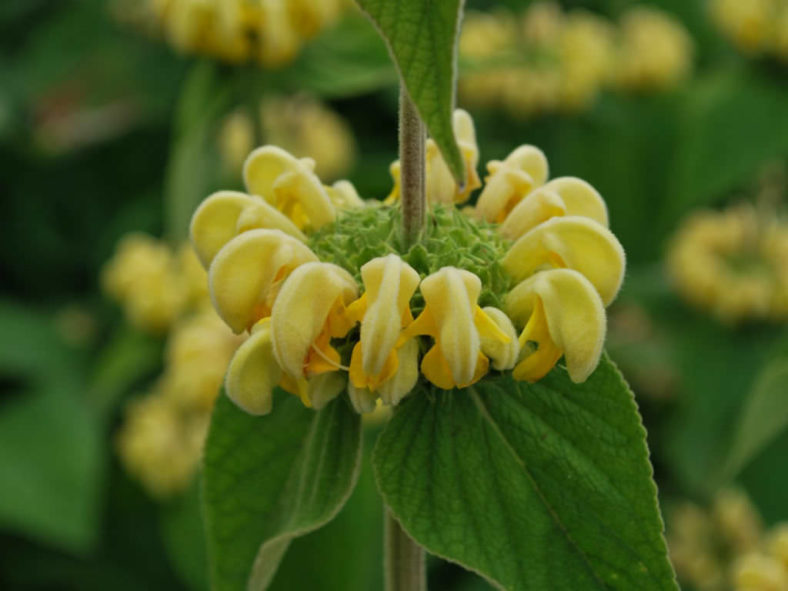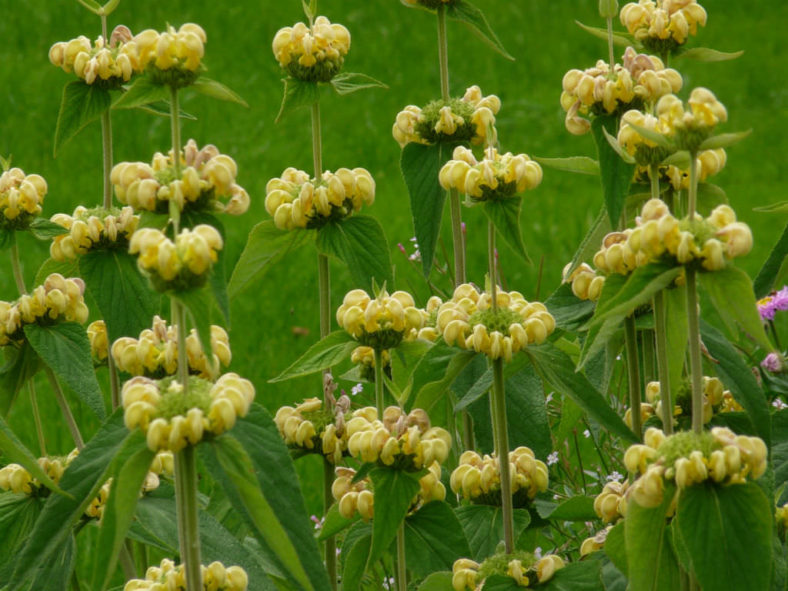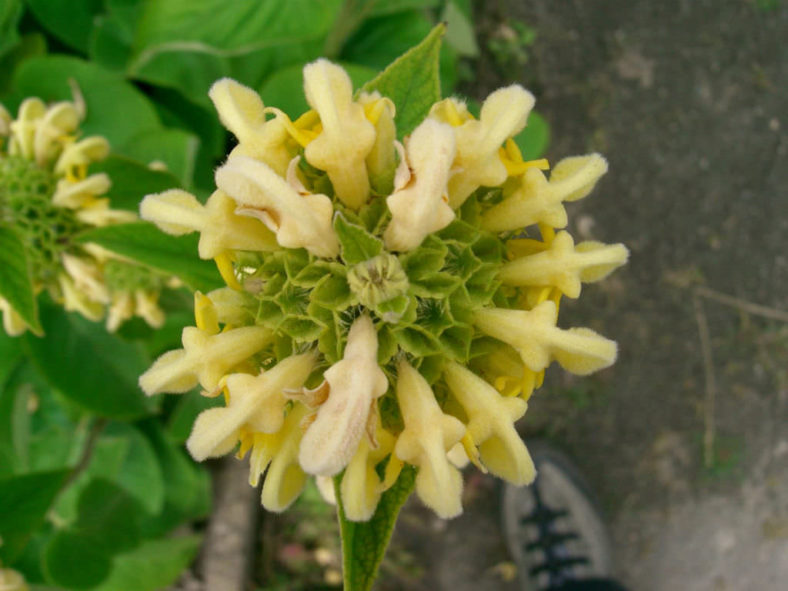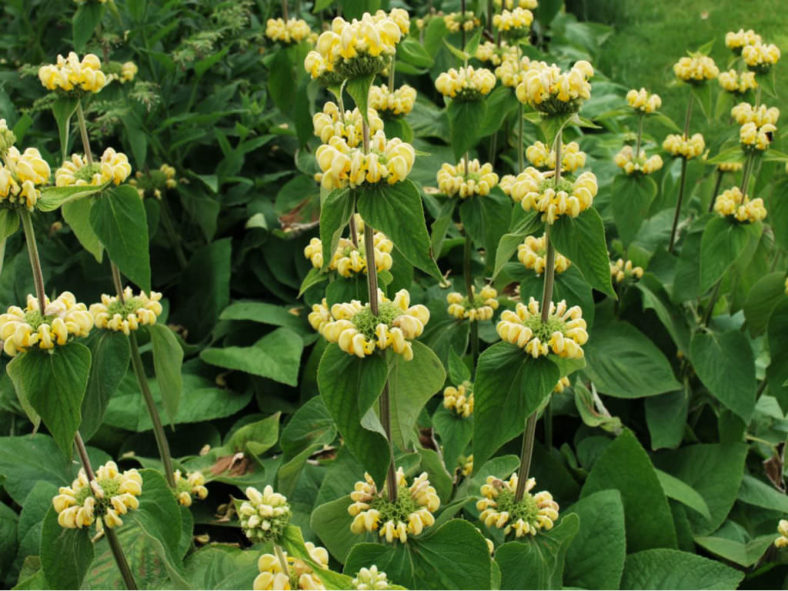Scientific Name
Phlomis russeliana (Sims) Lag. ex Benth.
Common Name(s)
Turkish Sage, Jerusalem Sage
Synonym(s)
Phlomis lunariifolia var. russeliana
Scientific Classification
Family: Lamiaceae
Subfamily: Lamioideae
Genus: Phlomis
Origin
Phlomis russeliana is native to Turkey and Syria in southwest Asia.
Flower
Color: Pale yellow
Bloom Time: Summer
Description
Phlomis russeliana is an upright herbaceous perennial that grows up to 3 feet (90 cm) tall and up to 2 feet (60 cm) wide. The basal leaves are aromatic, gray-green, sage-like, rough-textured, and up to 8 inches (20 cm) long.
Tiny flowers are tubular, hooded, 2-lipped, pale yellow, and appear in whorled clusters from early to late summer at intervals along columnar 4-angled flowering stems, which rise well above the basal foliage. In late summer, flower clusters give way to ornamental seed heads, which remain attractive throughout fall into winter.

Hardiness
USDA hardiness zones 5a to 9b: from −20 °F (−28.9 °C) to 30 °F (−1.1 °C).
How to Grow and Care
If you wish to plant Phlomis in a container, use a large one filled with compost with a soil foundation. Try not to be too generous in feeding and watering your plant, as it actually grows well in drought. Once your Phlomis begins to form flowers, you may need to do some trimming as it tends to grow uncontrollably. Trimming it back will put a limit on this. When winter comes, keep the plant protected in a cool area. Always remember that you should water it as minimally as possible.
For propagating purposes, select seeds of medium size, preferably during autumn. Make use of a plug or seed trays, covering them with a thin coating of compost. Place them in a cool area. The germination process can be quite swift. As soon as your seedlings are big enough, you may begin to transplant them into a place in your garden that is safe from frost.
See more at How to Grow and Care for Phlomis.
Links
- Back to genus Phlomis
- Plantpedia: Browse flowering plants by Scientific Name, Common Name, Genus, Family, USDA Hardiness Zone, or Origin
Photo Gallery
Click on a photo to see a larger version.




